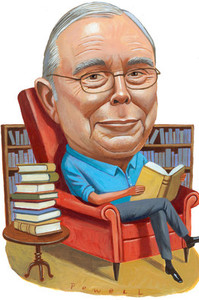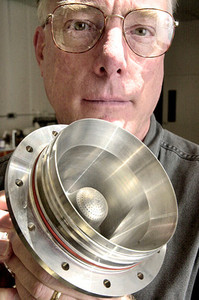Intel CEO Craig Barrett. Source of caricature: online version of the WSJ article quoted and cited below.
(p. A9) Craig Barrett is spending the last days of his tenure as Intel chairman the same way he spent his previous 35 years at the corporation: moving at a superhuman pace that leaves exhausted subordinates in his wake.
Mr. Barrett has maintained this lifestyle since he replaced Andrew Grove as CEO of Intel in 1998. “Was it hard to follow a legend?” he asks himself in his typical blunt way, adding, “What do you think?” Mr. Barrett barely broke pace when he became chairman in 2005, and shows no sign of slowing even now, at age 69, as he faces retirement.
. . .
The latest thing that has him animated is the record $1.45 billion antitrust fine levied against Intel by the European Union this week. Mr. Barrett shakes his head and says, “The antitrust rules and regulations seem designed for a different era. When you look at high-tech companies, with the high R&D budgets, specialization and market creation they need to hold their big market shares, it’s so very different from the old world of oil companies and auto makers that the antitrust regulations were designed for. They are out of sync with reality.
“And how do you reconcile European regulators, who don’t believe that any company should have more than 50% market share — even a market that company created — with the way we operate here? Of course, now it seems as if our Justice Department is preparing to march in lock-step behind Europe. In the end, all they are going to do is create barriers to companies growing, entering into new markets, and bringing new technologies into those markets. And when we stop being the land of opportunity, all of those smart immigrant kids getting their Ph.D.s here are going to start heading home after they graduate. Then watch what happens to our competitiveness.”
For the full story, see:
MICHAEL S. MALONE. “OPINION: THE WEEKEND INTERVIEW with Craig Barrett; From Moore’s Law to Barrett’s Rules; Intel’s chairman on antitrust silliness and the secrets of high-tech success.” Wall Street Journal (Sat., MARCH 16, 2009): A9.
(Note: ellipsis added.)








